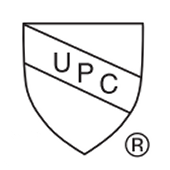What’s in Lake Mead Water: Exploring the Composition and Risks
Lake Mead, located on the border between Nevada and Arizona, is one of the largest man-made reservoirs in the United States. Created by the Hoover Dam in the 1930s, it serves as a crucial water source for millions of people in the southwestern U.S. and supports agriculture, industry, and municipal needs in both Nevada and California. But with climate change, severe droughts, and increasing demands on its resources, Lake Mead has faced water level declines in recent years, raising important questions about the quality and safety of the water in this vital reservoir.
The Composition of Lake Mead Water
Lake Mead is primarily fed by the Colorado River, which originates in the Rocky Mountains and travels across seven states, eventually reaching the reservoir. The water in Lake Mead contains a variety of substances, both natural and human-made, that come from the surrounding environment, including minerals, organic matter, and chemicals.
1. Minerals and Salts
The water in Lake Mead is not pure but rather contains dissolved minerals, including calcium, magnesium, and sodium. These are naturally occurring substances that are carried into the lake by runoff from surrounding rivers, streams, and tributaries. High concentrations of minerals in water are not necessarily harmful, but they can contribute to the water’s “hardness,” which can impact its taste and cause scaling in pipes and appliances.
2. Sediments and Organic Matter
Sediments, which consist of fine particles of soil, clay, and organic material, are often suspended in water and can accumulate in the lake over time. These materials come from erosion of the surrounding land, especially during periods of rainfall or runoff. Organic matter, including decaying plant material, can also make its way into the reservoir, contributing to the presence of nutrients that encourage the growth of algae.
3. Chemical Contaminants
Lake Mead water contains various chemicals, some of which come from agricultural runoff, wastewater discharge, and industrial activities. Common contaminants include nitrates, phosphates, and pesticides. While water treatment processes generally remove most harmful chemicals, some residual pollutants can remain, especially during periods of low water levels when contaminants become more concentrated.
4. Heavy Metals
Due to the history of mining and industrial activities in the surrounding areas, Lake Mead can sometimes contain traces of heavy metals like lead, mercury, and arsenic. These contaminants pose health risks, particularly when they accumulate over time and enter the water supply. Water quality testing and monitoring are essential to ensuring that concentrations of these metals remain within safe limits.
The Impact of Drought and Water Levels
As Lake Mead’s water levels continue to drop due to ongoing drought conditions and increased water demand, the composition of its water can be affected in several ways. Lower water levels concentrate pollutants and increase the risk of harmful algal blooms, which can produce toxins that are harmful to both humans and wildlife. The decrease in water volume also results in less dilution of contaminants, making the water quality less predictable.
In recent years, the U.S. Bureau of Reclamation has been working on managing the lake’s water to balance the needs of agriculture, municipalities, and wildlife. However, as water levels continue to decline, it’s expected that these management efforts will become more complicated, and the risk of water contamination will increase.
Risks to Human Health and Safety
For most people who rely on Lake Mead water, strict water quality standards ensure that it is treated to meet safety guidelines. However, the changing conditions of the reservoir raise some important health concerns:
- Algal Blooms and Toxins When water temperatures rise and nutrient levels increase, harmful algal blooms (HABs) can develop. These blooms produce toxins that can cause skin rashes, gastrointestinal issues, and even liver damage if ingested. Visitors to Lake Mead, as well as people consuming its water, should be aware of potential HABs, especially during warmer months.
- Chemical Contaminants Though water treatment plants are equipped to remove many of the common pollutants in Lake Mead, persistent chemical contaminants like pesticides, fertilizers, and industrial runoff can still present long-term health risks, especially if concentrations are higher than expected.
- Heavy Metals While levels of heavy metals like mercury and arsenic are generally low in Lake Mead, the prolonged presence of these substances in the water supply, especially in higher concentrations, can lead to long-term health effects, including kidney damage, cancer, and neurological problems.
Water Treatment and Safety Measures
Fortunately, the water supplied to homes and businesses from Lake Mead undergoes extensive treatment before it is distributed. Water treatment facilities remove harmful bacteria, viruses, and contaminants to ensure the water is safe for consumption. This includes:
- Filtration: Removal of large particles and sediment.
- Disinfection: Chlorine or other disinfectants are added to kill bacteria and pathogens.
- Chemical Removal: Treatment processes such as activated carbon filtration can remove chemicals, heavy metals, and organic contaminants.
Public water agencies closely monitor the water quality from Lake Mead and conduct regular tests to ensure that any changes in water composition are detected quickly. In the event of hazardous conditions, public advisories and water restrictions are issued.
Conclusion
While Lake Mead remains a critical water resource for millions, the ongoing challenges of drought, climate change, and water demand highlight the importance of careful monitoring and management of this precious supply. The water in Lake Mead is not just H2O—it’s a complex mixture of natural elements and human influence that requires diligent oversight to ensure it remains safe for consumption and environmental health.
As the region faces a new era of water scarcity, understanding what’s in the water and how to protect it will be crucial to maintaining the balance between human needs and environmental sustainability.


